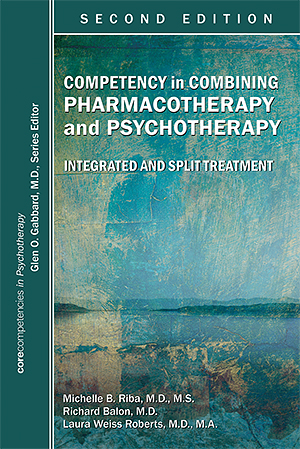Sections
Excerpt
Millions of individuals living with mental illness in the United States could, or do, greatly benefit from psychiatric care that addresses both biological and psychosocial considerations. For the past 30 years, psychiatric care for most mental disorders in the United States has been increasingly characterized by psychopharmacological treatment (Correll et al. 2011; Olfson et al. 2012, 2014) and evidence-based psychotherapies such as cognitive-behavioral therapy and interpersonal therapy, including collaborative care in primary care contexts (Katon and Unützer 2013; Raney 2015). For many psychiatrists in the United States, the provision of psychotherapy may not be as profitable as providing medication or other treatments alone. Nevertheless, evidence-based practice guidelines recommend that psychiatrists provide psychotherapy for patients with many major mental disorders, such as schizophrenia, bipolar disorder, and major depression (American Psychiatric Association 2002, 2004, 2010). Many empirical studies indicate that patients who receive both psychopharmacological treatment and psychotherapy may have better treatment outcomes than patients who receive only psychopharmacological treatment for a number of conditions, including major depression (Hollon et al. 2014; Karyotaki et al. 2016), anxiety (Barlow et al. 2000; Fansi et al. 2015), bipolar disorder (Parikh et al. 2015), dependence/smoking cessation (Stead et al. 2016; U.S. Department of Health and Human Services 2000), and erectile dysfunction after radical prostatectomy (Naccarato et al. 2016). Preliminary evidence suggests that quality of life and functioning is improved with combined pharmacological and psychosocial treatments for depression (Kamenov et al. 2017), for borderline personality disorder (Bozzatello and Bellino 2016), and for some substance use disorders (Stead et al. 2016). The combination of pharmacotherapy and psychotherapy has thus been recommended in some guidelines, such as the National Institute for Health and Care Excellence guideline for the treatment and management of depression in adults.
Access content
To read the fulltext, please use one of the options below to sign in or purchase access.- Personal login
- Institutional Login
- Sign in via OpenAthens
- Register for access
-
Please login/register if you wish to pair your device and check access availability.
Not a subscriber?
PsychiatryOnline subscription options offer access to the DSM-5 library, books, journals, CME, and patient resources. This all-in-one virtual library provides psychiatrists and mental health professionals with key resources for diagnosis, treatment, research, and professional development.
Need more help? PsychiatryOnline Customer Service may be reached by emailing [email protected] or by calling 800-368-5777 (in the U.S.) or 703-907-7322 (outside the U.S.).



